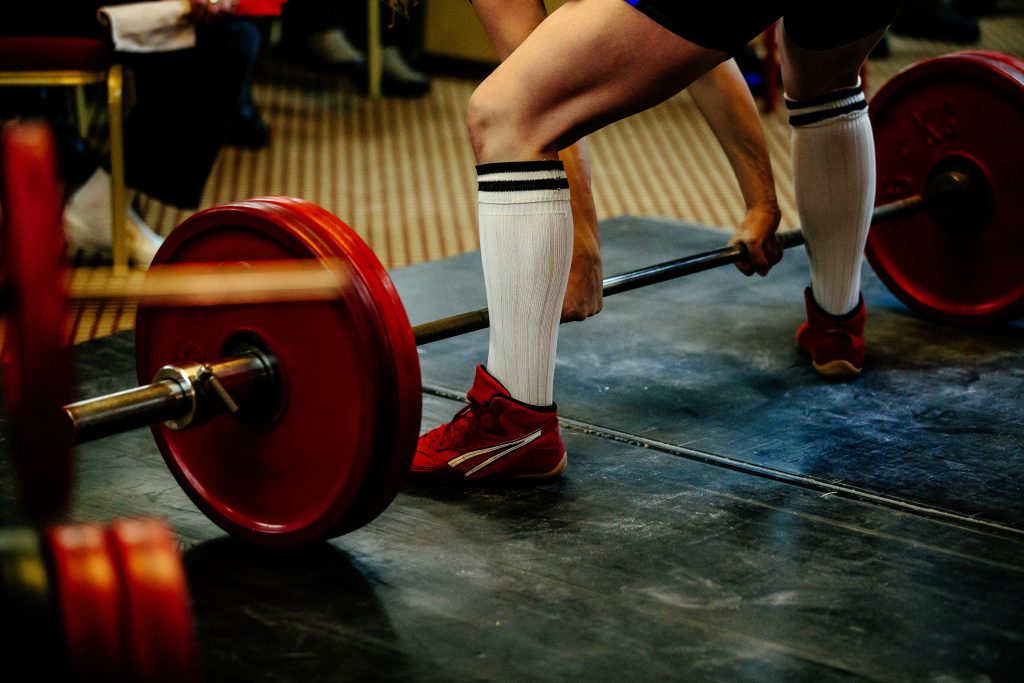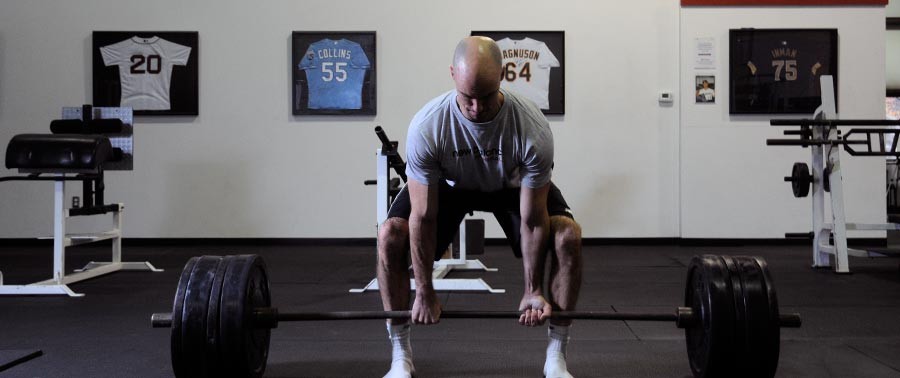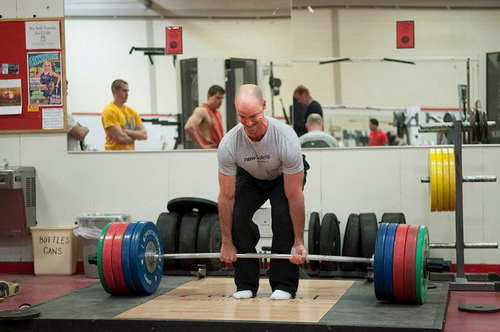Why Kids Should Cheat the Deadlift
Today’s guest post come courtesy of Dan Edelman of The Brand X Method, which is a wonderful institution dedicated to improving youth sport(s) and fitness through professional youth coach education.
I love what they stand for and what the strive to instill in their coaches and athletes.
There’s no ONE set way to train anyone – youth athletes included – and oftentimes the larger, more pertinent approach is adopting methodologies for LONG-TERM health and fitness.
Not for ego.
Enjoy the read (and be sure to download the FREE guide “How to Reduce the Risk of Injury in Youth Athletes” below).

Copyright: spotpoint74 / 123RF Stock Photo
Why Kids Should “Cheat” the Deadlift
Sumo is cheating.
We hear that a lot. Mostly from a certain uppity corner of the powerlifting community and mostly owing to its shortened range of motion compared to the conventional deadlift.
Well, we love it. The Brand X Method™ loves the sumo deadlift.
And we’re often asked about this great love affair.
So yeah, why sumo?
- When was the last time you set up in a conventional stance to pick up a cinder block, sack of dog food, a child? Never. The sumo stance is how we pick up stuff in the real world.
- Over the course of 15 years, we have found that kids can learn a safe sumo setup more quickly and maintain a neutral spine throughout the movement more consistently. Could it be because our bodies are designed to pick up heavy stuff in this position?
- The conventional stance requires more work from the spinal erectors (see, e.g., here). Should the erectors fatigue or fail under load—or be left holding the bag so to speak by primary mover fatigue or poor technique—the spine is at risk of injury. We train kids, which by definition means we’re training mostly beginner and intermediate lifters. The responsible approach is to minimize that risk.
- Powerlifting guru Louie Simmons has said that training wide supports narrow applications but not the opposite. At Brand X – The Lab, we’ve seen people improve their conventional deadlift after training exclusively sumo—but, yeah, you guessed it—not the opposite.

To say the sumo stance is functional is to lose its significance in all the buzz around that overused label.
But it is functional.
Profoundly so.
The sumo stance is everywhere in the everyday world, from the backyard to the ball field, from the garage to the library.
When we train sumo, we enhance physical literacy, we improve our ability to engage with the environment. The more we are able to interact with the world and others around us in positive and rewarding ways, the healthier and happier we—and everyone around us—can be.
Imagine a world like that.
We do.
Never Say Never
So am I saying that we never train conventional?
Of course not.
We program conventional deadlift variations all of the time for our experienced lifters:
Single-leg dumbbell, deficits, rack pulls, RDLs… Conventional deadlifts make for great accessory and supplemental work.

Some of our experienced kids are committed competitive powerlifters. Our sports-specific programming includes conventional deadlifts because it makes sense to identify which position the kid best pulls from.
Is this a contradiction?
No.
We’re talking sport.
We’re talking kids who want to lift the most weight possible. That doesn’t mean we simply let the kid pull conventional. A TBXM™ program for a kid who can stand up with more weight in the conventional stance than in the sumo position also includes exercises that support the conventional stance to ensure that safety and efficiency are maximized during training and competition.
The conventional stance deadlift transfers to the power clean, a staple power-building exercise for The Brand X Method™.
Let’s optimize.
Occasionally anthropometry such as long femurs, long torso, and comparatively short arms call for us to explore a conventional stance for plateau-busting insights.
Individualizing our program is essential to our mission.
Frankly, variation is a fairly conventional strength training principle. And therein lies one of the great things about The Brand X Method™—our principles are sound; they are long-established, evidence-based, and proven. With that kind of foundation, we can forever explore and evolve best practices for teaching kids how to move more safely and efficiently for fitness, sport, and life.
If You Ain’t Cheating You Ain’t Trying
The Brand X Method™ wrangles with the constant tension between the goals of youth sport and the goals of our program.
The former wants high performance at all times (e.g., lifting the most weight, throwing the hardest, running the fastest) while we want to see the discovery, participation, and enjoyment of sport and other physical activities for all time.Thing is, the tension seems to come from the sports side and is almost entirely driven by an over-reliance on sports-specific training and a lack of knowledge about how our program should be viewed as essential to sports-specific training rather than some kind of extraneous “activity.”
We know that high performance and lifelong physical activity based on consistently good movement don’t have to be mutually exclusive.
Our proof is in the USA Powerlifting—California state record book where our kids and teens (and even some adults) hold more than 100 records.
Imagine that—prioritizing safety and efficiency in the form of consistently excellent (and natural) movement yields record holders, champions, and national qualifiers, most of whom stepped onto the platform just for kicks.
High performance is a by-product of The Brand X Method™.
Sumo. What they call cheating, we call common sense.
What they snicker at, we find advantageous.
Efficient.
Safe.
Long-term.
We want our kids able to lift when they’re 40 50, 60, beyond.
A youth fitness program that is not thinking about lifetime fitness is not thinking period.
We’ll continue to train the most efficient, safest movement built on naturally intended, functional motor patterns and positions. We’ll continue to encourage kids to try different sports and then provide them the best strength and conditioning we can to keep them strong, fast, and durable. We’ll continue to imagine a better future for our kids. And we’ll continue to gather the medals, trophies, and records that come with it.
They say cheating. We say scoreboard, baby.
About the Author
Dan Edelman is a Brand X Youth Coach and has been a member of The Brand X Method staff for nearly a decade, principally as staff writer and editor. He is the current Director of Marketing & Communications and is co-owner of R Town Strength & Wellness – A Brand X Method Training Center in San Diego County, California.
About the The Brand X Method
 Since 2004, we have been driven by a relentless pursuit of best practices in youth training. Our focus on motor pattern training and physical literacy enhancement optimizes kids’ fitness and elevates their athleticism. We help protect kids and teens against sports injury, boost their sports performance, and push back against the forces behind obesity.
Since 2004, we have been driven by a relentless pursuit of best practices in youth training. Our focus on motor pattern training and physical literacy enhancement optimizes kids’ fitness and elevates their athleticism. We help protect kids and teens against sports injury, boost their sports performance, and push back against the forces behind obesity.
The mastery, confidence, and motivation that kids develop in our gyms are the ingredients of freedom and fearlessness. The Brand X Method™ instills the essence of adventure, passion, and joy in kids and teens when playing their favorite sports, trying new things, and tackling life’s challenges so they can step out of our gyms knowing they can do whatever they set out to do.
Free Download: Brand X Youth Coaches Guide & Assessment
Contact Email: info@thebrandxmethod.com



Comments for This Entry
Cole Robbins
Cailer William aka "Dr Deadlift" always trains conventional when he is not close to a meet. That is, he is training conventional to imprive to his Sumo. You say that conventional to sumo transfer is not a thing but the worlds greatest Deadlifter does it extremely successfully...December 23, 2018 at 1:06 pm |
Han
Could you give me an example of children pick up objects from the ground with a sumo stance ?December 24, 2018 at 2:13 am |
Pourquoi les enfants devraient tromper le soulevé de terre
[…] […]June 12, 2020 at 6:10 pm |